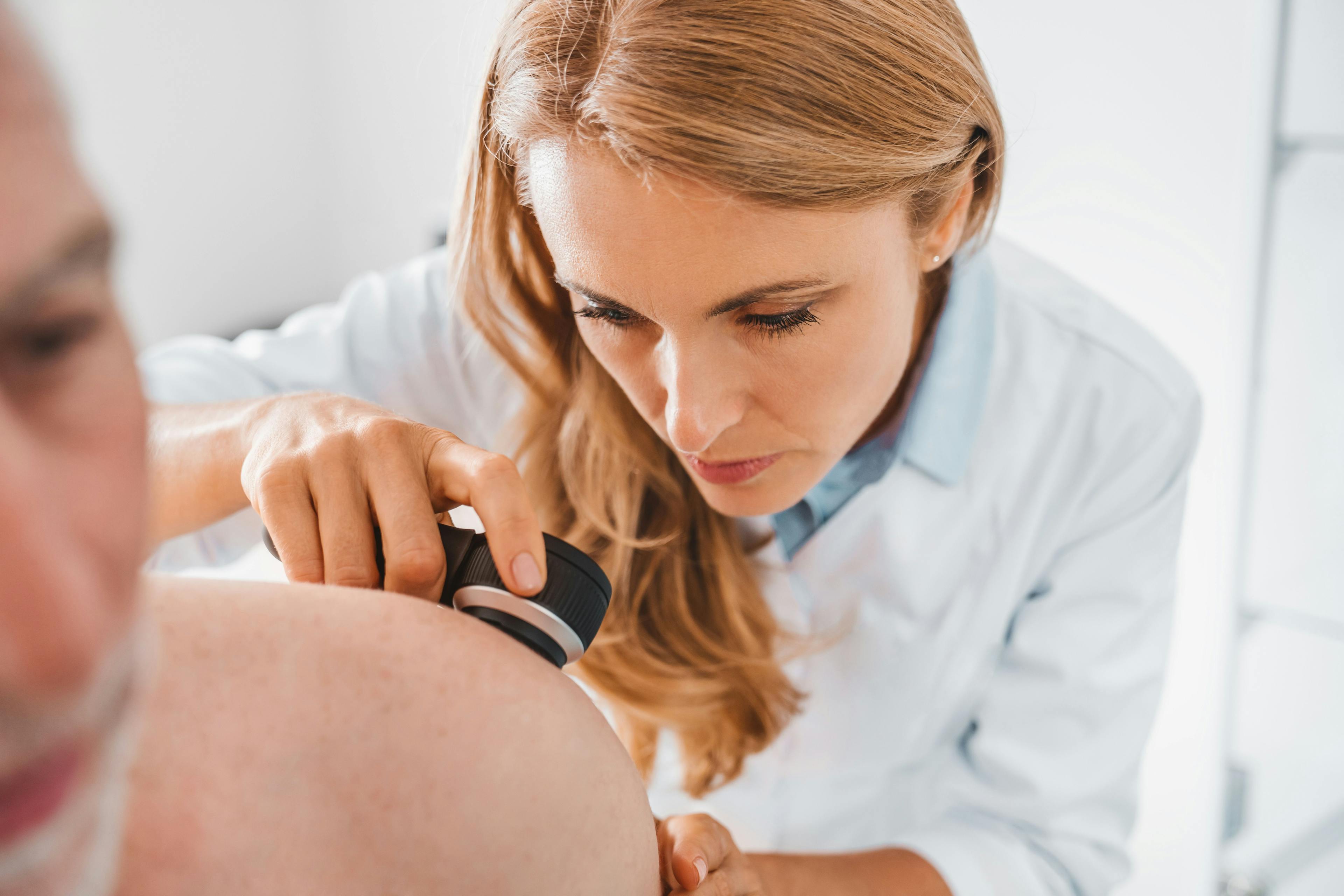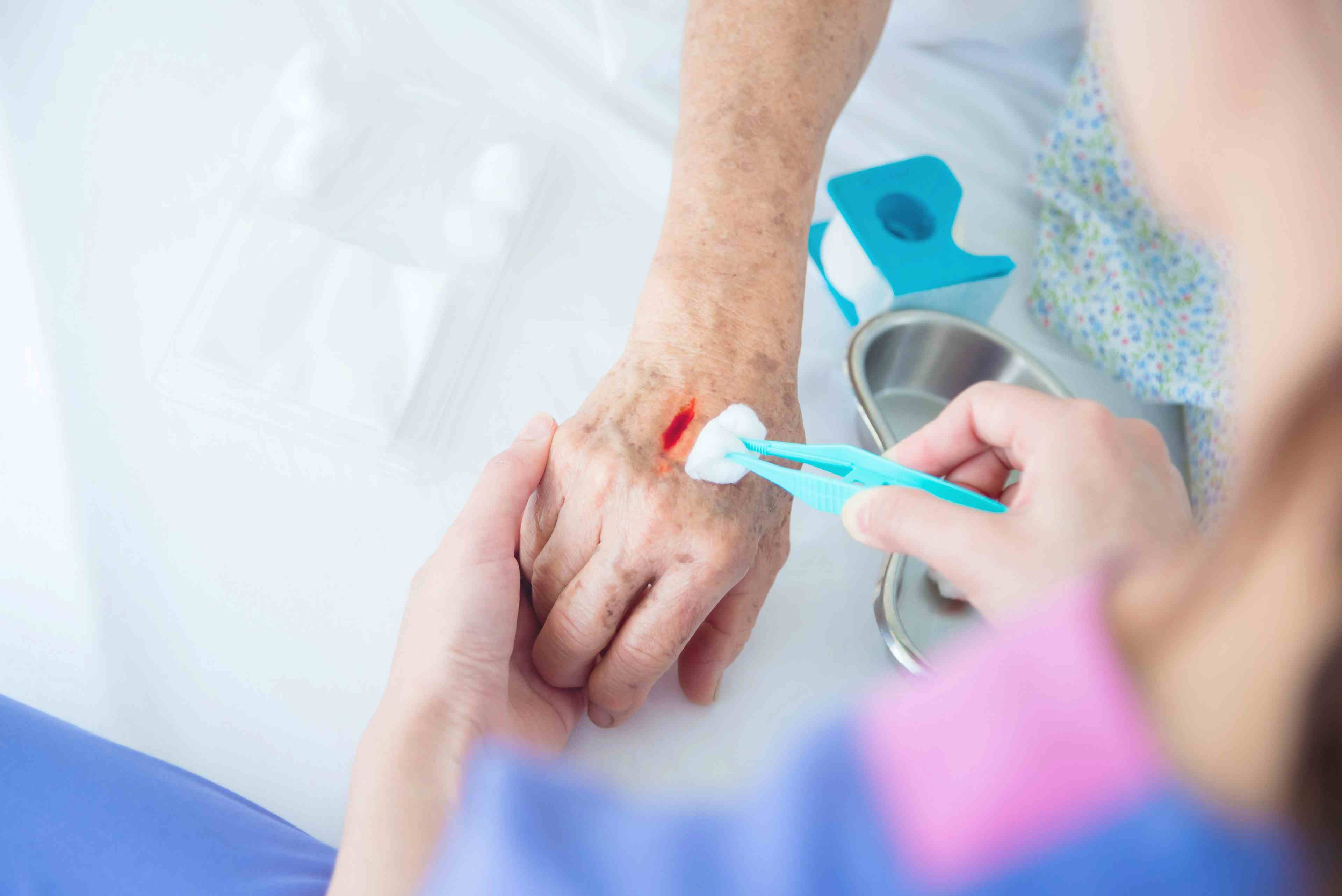- Acne
- Actinic Keratosis
- Aesthetics
- Alopecia
- Atopic Dermatitis
- Buy-and-Bill
- COVID-19
- Case-Based Roundtable
- Chronic Hand Eczema
- Chronic Spontaneous Urticaria
- Drug Watch
- Eczema
- General Dermatology
- Hidradenitis Suppurativa
- Melasma
- NP and PA
- Pediatric Dermatology
- Pigmentary Disorders
- Practice Management
- Precision Medicine and Biologics
- Prurigo Nodularis
- Psoriasis
- Psoriatic Arthritis
- Rare Disease
- Rosacea
- Skin Cancer
- Vitiligo
- Wound Care
News
Article
Dermatology Times
Poster Highlights RFMN’s Promise for Treating Hypertrophic Scars in Darker Skin
Author(s):
Key Takeaways
- RFMN with semi-insulated needles shows promise for hypertrophic scars, especially in Fitzpatrick skin types IV-VI, offering fewer adverse effects than traditional treatments.
- The study demonstrated significant improvements in scar texture, thickness, erythema, and hyperpigmentation using RFMN, with complete resolution in some cases.
Case studies demonstrate success with radiofrequency microneedling for hypertrophic scars in Fitzpatrick IV through VI.
Юля Бурмистрова/AdobeStock

CONFERENCE REPORTER
Hypertrophic scars remain a challenging clinical problem, particularly in patients with Fitzpatrick skin types IV through VI. A new poster presented at the Society for Dermatology Physician Assistants (SDPA) Annual Fall Dermatology Conference in Las Vegas, Nevada, examined the use of radiofrequency microneedling (RFMN) with semi-insulated needles as an alternative approach and found promising approached.1
Although considered the gold standard for addressing hypertrophic scars, traditional treatments such as fractional ablative lasers (AFR) and intralesional triamcinolone can cause adverse effects in patients with Fitzpatrick skin types IV through VI. With that in mind, investigators Sarah Louis from John Hopkins University, Maryum Ali, OMS-III at Ohio University Heritage College of Osteopathic Medicine at Cleveland, and Robyn Siperstein, MD, board-certified dermatologist practicing at Siperstein Dermatology Group in Boynton Beach and Boca Raton, Florida, conducted a double case report study leveraging RFMN with semi-insulated needles.
The Cases
The study included 2 patients with Fitzpatrick Skin Types II and V. Both patients underwent multiple RFMN treatments using a 64-pin semi-insulated tip at various depths (3mm, 2mm, and 1.5mm).
The first case report looked at a 72-year-old female with Fitzpatrick Skin Type II. About Approximate a month following a full field laser resurfacing, the patient developed a hypertrophic erythematous scar on her upper lip. Scarring failed to respond to treatments with intense pulsed light (IPL), fractional resurfacing, and intralesional triamcinolone.
The skin was prepped, including administration of anesthetic topical cream, with anesthetization with topical cream (benzocaine 20%, lidocaine 6%, tetracaine 4%) for 45 minutes. The skin was then cleansed with alcohol. In total, the patient received 2 RFMN treatments via the Secret RF (Cutera, Brisbane California) with a 64-pin tip. The initial treatment had 2 mm depth and 200 ms at a 50% intensity. The second treatment was also completed at a 50% intensity, this time with a depth of 3 mm and 300 ms. The 2 treatments were separated by 1 month.
Approximately 1month after the second treatment, the patient experienced complete resolution of both hypertrophy and erythema.
In the second case, a 24-year-old female with Fitzpatrick Skin Type V presented with had hypertrophic scars on her anterior and posterior bilateral lower legs. The scars resulted from burn injuries and subsequent skin grafts; the scarring was approximately 2 years old.
After discussing treatment options, the patient chose RFMN because it had the least downtime and adverse event profile. As with the previous case, an anesthetic cream ((benzocaine 20%, lidocaine 6%, tetracaine 4%) was applied topically for 45 minutes, followed by having the area cleaned with alcohol. For some of the treatments, the patient also requested additional numbing given the large area, and received lidocaine injections.
Treatment was concentrated in one region at time. During the many necessary sessions, each scar received treatment with Secret RF RFMN twice. Both passes used a 64-pin insulated tip; the first pass was 50% watts 3mm at 300 ms and the second was at 2mm and 200ms. A third pass of 50% intensity,1.5 mm depth, and 100ms was complete in areas with severe skin irregularities.
A noticeable improvement was reported 1 month following the second treatment session, with the patient reporting a blending of the scar into the surrounding skin and continual improvement in skin thickness, texture and discoloration. Although the patient experienced mild erythema and swelling the first day and MENDS after several days, there were no unexpected adverse events.
Clinical Implications
The study authors noted that only 2 previous studies on the use of RFMN for these scars, demonstrating a need for further investigation and discussion. Indeed, an author noted their practice considers RFMN as the preferred treatment strategy for recalcitrant hypertrophic scars. That practice has found success with a semi-insulated needle and longer pulse widths to denature the scars.
In this study, the authors reported improved skin texture, thickness, erythema and hyperpigmentation in hypertrophic scars. Furthermore, they reported this strategy allows for more personalization.
"RFMN provides a unique method of treatment by localizing energy to the tip of the needle, allowing the device to reach deeper areas of the scar without disturbing the top layer of skin,” the researchers explained. “Its ability to perform multiple passes at various depths depending on the thickness of the scar while insulating the epidermis from electrothermal damage is why it should be considered a superior treatment modality for hypertrophic scars in those with darker skin.”
Although RFMN shows promise, the authors emphasized the need for further research (ie, large-scale randomized control studies) to establish optimal treatment parameters, long-term outcomes, and comparative efficacy with other modalities.
Reference
1. Louis S, Ali M, Siperstein R. Treatment of Hypertrophic Scars in All Skin Types Utilizing Radiofrequency Microneedling with Semi-Insulated Needles. Poster presented at: The Society for Dermatology Physician Assistants (SDPA) 22nd Annual Fall Dermatology Conference; November 13 -17, 2024; Las Vegas, Nevada.

Newsletter
Like what you’re reading? Subscribe to Dermatology Times for weekly updates on therapies, innovations, and real-world practice tips.































